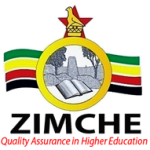UNIVERSITY AFFILIATIONS
Students Graduated
0
Industry Headers
0
Awards Won
0
Arrupe Jesuit University is a center of academic excellence and research in the 500 year tradition of Jesuit education.
Contact
- Address : No. 16 Link Road, P.O Box MP 320 Mount Pleasant, Zimbabwe.
- Phone: +263 242 745411, 745903
- Fax: +263 242 745411
- WhatsApp Number: +263 71 895 9249
- General Inquiries: info@aju.ac.zw
- Admissions: admissions@aju.ac.zw
- Registrar: registrar@aju.ac.zw
- Accounts: accounts@aju.ac.zw
- Development: development@aju.ac.zw
- Human Resource: hr@aju.ac.zw
- Librarian: librarian@aju.ac.zw
“Ever to Love and to Serve”
Arrupe Jesuit University, Zimbabwe © Copyright 2022. All Rights Reserved.




